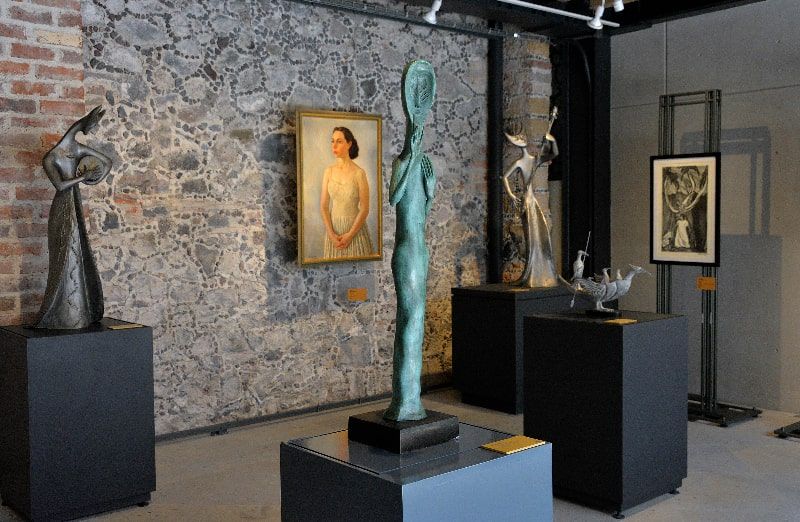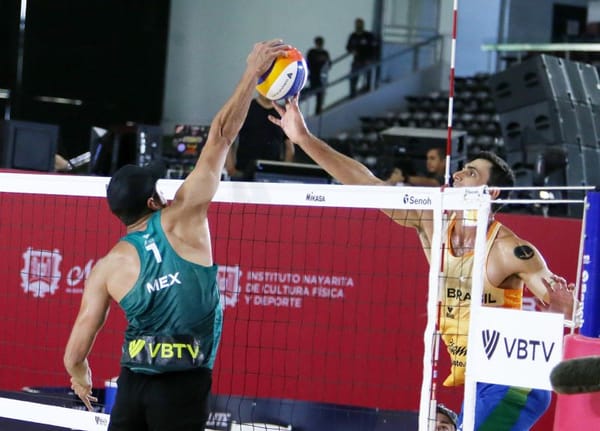UNAM Women's Museum tells the story of their role in the history
UNAM's Museum of Women shows their contribution to the building of Mexico. Visitors will always find something new.

Of the 100 women's museums in the world, the one at UNAM is unique because it presents a historical review of the situation of women, from pre-Hispanic times to the present; the first in Mexico to address this subject, and the second in Latin America.
This precinct is a place waiting for visitors and, unlike other sites, it is an important cultural center, especially for the inhabitants of the Historic Center of Mexico City.
In addition to making visible the work of women and their contribution to the construction of the nation, there are conferences, poetry readings, musical and theatrical evenings, art exhibitions, and even legal advice and psychological therapy.
Patricia Galeana Herrera, its director, said: "In order to understand the present, we ask questions of the past, and the past gives us light to act. "If we want to solve the problem of violence against women, the femicides, we must understand the historical and cultural roots of this problem. That is the main objective of the museum.
In times of polarization, such as the present, visiting the Women's Museum helps us to understand that we must be united and respect the human person, regardless of their preferences, ideologies, or any other condition.
This cultural space also offers free legal and psychological counseling with specialists from the Mexican Federation of University Women (FEMU), through messages on social networks or by writing to museodelamujer.org.mx. It also works with academics in other states to promote the creation of other dissemination centers that recover the forgotten history of women.
There are activities every day. Visitors will always find something new, for example, the expansion of the museum and new rooms (in addition to the eight existing ones): one dedicated to the suffragettes and the United Front for Women's Rights, and another to the four waves of feminism, recently inaugurated.
As part of this renovation, the Clementina Díaz y de Ovando Documentation Center became a library, and there is also an auditorium for temporary exhibitions and cultural activities.
High impact
Latin America is the region in the world with the fewest museums dedicated to women's issues; "we are lagging behind". The two that exist in Argentina, one in Buenos Aires and the other in Cordoba, "are really exhibition halls, without a permanent display or a museum script," said Galeana Herrera.
In Colombia there is another, in the district of Barrancabermeja, "but it is the memory of the women who have fought to put an end to the guerrillas that have plagued that country for more than half a century. Most of them refer to a particular historical event, such as the suffragettes in Manchester. None of them makes a complete review, such as that of the UNAM.
Another large group of museums dedicated to the subject, explained the university professor, mainly present the work of artists. In contrast, the museography proposal at the former University Printing Press (founded in 1937) is attractive.
I think it is important for the public to know what women protagonists have written about their problems throughout history, so I made a selection of texts that, through interactive screens, videos, and 3D recreations, form part of the historical tour.
During the health emergency, when the Museum's activities were carried out virtually, "we had a reach of three million users, not only in the country, but also in the United States, Spain, and Latin American countries, and we want to keep this audience we have gained".
In-person, more young people than adults, and more women than men, attend. They come from schools: entire groups come, from high schools and even middle schools, as well as students from our University who come to do their research and theses in the library; older people also come, but to a lesser extent.
Young Museum
The Museum project arose as a paper presented by Galeana Herrera at a United Nations congress when a call was made for proposals to teach citizens respect for human rights.
It was approved by the Gender Commission of the then Legislative Assembly of the Federal District, the Senate of the Republic, and the United Nations, but it lacked a venue and it was thanks to our National University that we had this venue. The realization of the museum took approximately 15 years, but the wait was worth it because it has been a success and the community has made it their own.
Sometimes people do not enter other museums because they consider them places for foreigners, but here there are accessible activities such as the genre film club and for different audiences. The multipurpose room, which is also a documentation center, was small. Many times a television had to be placed in the reception area so that people who could no longer fit in could listen. Now we have a friendlier and larger space.
Now the Documentation Center has become the Clementina Díaz y de Ovando Library; the multi-purpose room will host temporary exhibitions such as the sculptures currently on display, by Leonora Carrington, along with paintings owned by the Mexican Federation of Women University Students (FEMU), a group that participates in the Museum through its collection and its academics, who give workshops, courses and lectures free of charge.
Visitors can enjoy a wide collection of works of art (such as lithographs, engravings, watercolors, oil paintings, photographs, and sculptures) by different artists, such as Guillermo Ceniceros, Esther González, Sebastián, and Glenda Hecksher. "We have many works donated by the artists themselves or their relatives, such as the wife of Raul Anguiano, who donated an oil painting; or Leonora Carrington's son, Pablo Weisz, who gave the Museum 'La barca de las grullas ('The Boat of the Cranes')'".
The Women's Museum, located at República de Bolivia 17, Centro Histórico, is open Tuesday through Sunday from 10 am to 6 pm.




